|
Prior to arriving in Colombia this past summer, I had numerous preconceived ideas of what to expect based on my previous trips to Venezuela. Given their proximity on the map, similar heritage, and testimonies by numerous visitors, I came away from my three-week trip realizing that Colombia was a country headed in a very different direction from its neighbor, both in their development of society and El Sistema. With tourism thriving and a rough history with drugs mostly in its past, each of the four cities I visited in Colombia were unique. I packed for weather ranging from 40—90 degrees as the changes in climate and landscape were as diverse as the Sistema-inspired programs I visited. My trip started in Medellin, a very large city bustling with traffic, mountainous views, perfect temperatures, and stunning properties. The youth instrumental programs in Medellin are run by an organization called La Red, which serves students in over 30 neighborhoods and schools throughout the city. Funded by the city government, the program serves both affluent and underserved areas—a unique concept in Medellin, where lots of effort has been placed on equalizing the playing field between residents with a varied levels of income. I was introduced to two schools in La Red by two of my former Boston colleagues, Rebecca Levi (Sistema Fellow ’10) and Claudia Garcia. When visiting the programs, we witnessed a less intense, but more creative approach to music making. Each program showcases a different type of ensemble, caters to all ages, and also provides instruction in music literacy. For instance, In Claudia’s nucleo, a theatre teacher taught a class on how to use their body’s to communicate and build trust within an ensemble. When visiting the wind ensemble in another part of the city, the ages of the students ranged from 12—22. After a quick vacation in the popular city of Cartagena, my next stop was Santa Marta, a warm, tropical, costal city on the Caribbean. Another former Boston colleague, Antonio Berdugo, hosted me as we spent our time hosting seminarios with students in Cajamag, a private organization that uses public funding to serve youth in the area. The music program is only a small branch of the organization, which leads to an insufficient quantity on resources, limiting their ability to grow artistically. This was a huge contrast to Venezuela’s national Sistema, which is able to offer more support and resources to their teachers, helping them improve the musical level of their program. The students in Santa Marta, of course, were fantastic to work with and displayed enthusiasm and hospitality that made rehearsals in the intense heat totally enjoyable. The final leg of my trip was in Bogota, Colombia’s capital city situated at over 8,000ft, where the temperature stays in the 50’s year around. I had a wonderful time working with the musicians of the Metropolitan Youth Orchestra of Batuta, the largest music for social change organization in the country. Given their flagship status, my first instinct was to compare their Metropolitan Youth Orchestra with the leading youth orchestras in Venezuela. However, given that the organization has branches in fewer cities, focuses more on fundamental musical training rather than orchestra training, and has been around for only just over 20 years, I realized that the leading “Sistema’s” in both countries are quite distinct. The lack of one governing organization throughout the country made it more difficult to achieve the standardized resources, which has led to so much artistic success in Venezuela. However, the more localized approach to building a Sistema in each city, rather than to form a national system has yielded some flexibility is allowing for each city to have numerous organizations create their own programs and customize their approach to each community. The difference in infrastructures in Colombia and Venezuela was certainly unexpected at first. While Venezuela has clearly invested much of its resources into developing a national system of youth orchestras that serves as many youth as possible, Colombia had a feel much closer to that of the United States and Europe--separate organizations created localized programs without much outside leadership. The clear commonality between the two South American countries was the children, who were eager, passionate, and relentless in their pursuit of music education, which instilled the joy that will motivate me to plan my next trip to South America soon. For a video containing photos, rehearsal footage, and student testimonies from my trip to Colombia, please see the video below! http://www.redmusicamedellin.org/ http://www.cajamag.com.co/#/ http://www.fundacionbatuta.org/
0 Comments
Ten minutes before the concert, I took my seat in the back of the sanctuary, eager to hear to the Brass Ensemble for the first time. I was in Coro, a city in north-western Venezuela, at the tail end of our five week excursion. The director, who I had met days earlier came running up to me with a smirk on his face.
“What piece would you like to conduct on the program?” he said enthusiastically in broken English. In my immediate shock, I think I muttered “huh?” “Why don’t you conduct the Fanfare from La Peri? It’s fourth on the program” I had just been asked to conduct in a concert with students I had never heard or rehearsed. In his love for the kids and the music, it was never about Luis (the director), but about welcoming a guest and bringing in a new experience for his students. Little did I know that being immersed in this act of generosity was going to be a learning opportunity for me as well. The selfless culture of El Sistema nucleos is one of indefinite learning and unconditional giving. The goals and needs of the collective always take precedence to the needs of the individual. As we experienced many conductors step down from the podium (often during their dress rehearsals), giving way to outside guests, it was never about their interpretation, or their tempi, or their perspective, or their contribution. It was simply an opportunity for them to open up their arms to someone new, who came with knowledge to share. Embodying this collective-first, individual-second culture will be challenging within the existing customs in the United States. Replacing the “what’s in it for me” ethos with “What can I give” is a significant step in creating an atmosphere that will begin generating bonds and effusing a sense of family within the ensemble. This has led me to believe, that El Sistema is simply not a noun, but a verb—a way of being, a way of learning, and a way of giving. At the end of our trip, it was none other than Dr. Abreu asking us for suggestions and feedback about the nucleos in Venezuela. If the culture of humility comes to life from the top of an organization, then it will surely flow down to those in its presence, empowering students, teachers, and the larger community to experience the joys of learning and giving, without expecting anything in return. 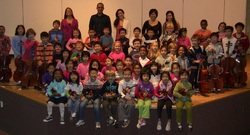 Having spent just a few months Boston, the most thrilling part of the city has been its people. In our life as artists, we are constantly making the connection between music and community. It is quite clear to me already that Boston seems to have limitless potential in using the arts as a vehicle to bring people together. In a world that now provides quick answers on the iPhone, music via Pandora, and media on YouTube, it may be the arts, which solely remains a channel to build, maintain, and value relationships with each other—which occasionally overshadowed by technology, are loosing quality. Now this strong statement is certainly a reflection of personal experiences: During the most profound musical experiences in my own career, I always seem to remember the people I was surrounded by. My time in Boston has been no different. In August, David, Julie (my colleagues in the fellowship), and I met four random strangers on the streets in Cambridge late one evening. After a few pleasantries, we learned that they were a Barbershop Quartet who were keen on teaching us a few lines of their music right then and there. We not only learned and sang together, but ended up attracting twenty other people from the streets who were interested in not only watching, but joining the “choir”. 45 minutes later (at 1:00am), I was singing songs that I had never heard before, and with 20 strangers! The gentleman who was standing next to me admitted that he had never sung before. I said “Perfect. You’re in the right place, because we don’t care. Give it a shot.” With the addition of that one stranger, it was an unexpected bonding experience that merely serves as a reminder as to the young, eager citizens of this city. Youth all across Boston are also committing their education to bring music to their communities.The Boston Children’s Chorus’ annual MLK tribute was a concert experience that transformed the audience into a family for ninety minutes. The Boston Arts Academy’s senior grant projects are directly focused around making an active change in the Boston community. El Sistema-inspired programs in Brighton (Conservatory Lab Charter School) and Chinatown (Josiah Quincy Elementary (seen above)) will soon be joined by projects in Sommerville, Jamaica Plain, Dorchester, and Roxbury. Boston not only has a plethora of artistic opportunity, but people that will engage in it. With the forward-thinking, dedicated learners present in this city, we now have a chance to link conservatories and public schools with communities who have little access or interest in classical music. So how do we get our neighbors attention? We use intervention where there is need and create a process and product that is relevant to very people we serve. To lead selflessly and give back to others encourages people to acknowledge the value of those around them. Boston is a city of collaborations waiting to be formed. Mitch Albom says, “if the culture you are surrounded by doesn’t suit you, create your own culture.” This city’s musicians certainly have. Flash Mob's are a great way to share music and dance with those around us and make the arts relevant in our communities. This is my new favorite one! 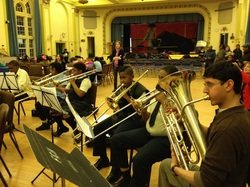 The fellows visited Play on Philly and got to spend time with Stanford Thompson (Abreu Fellow '09) and the students rehearsing holiday music. I had the privlege of hanging with the trombone section, and man these kids could play! 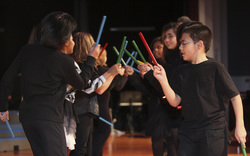 The Music in Charter Schools Festival in Philadelphia (MICS) was a spectacular event. The fellows and members of Opus Nine taughts students in ensembles, sectionals, and numerous workships. I was fortunate to teach an Indian stick dance (Dandia) to the kids, which they performed on Friday night's concert. The MICS Band rehearses I GOTTA FELLIN, by the Black Eyed Peas. 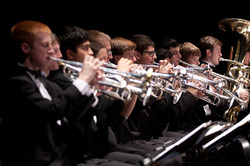 The Troy High School Band is deep into its "Taking it to the Streets" Project. Numerous student chamber groups are rehearsal rigerously and bringing music to their community. Recently, a brass quintet visited a retirement community where 18 audience members slowly transformed during the performance. From low-energy un-engagement to a wild sing-along, the students transformed their audience right before their eyes. One of the song requests was made by a lady in a wheelchair, who according to her caretaker "rarely" ever speaks. The students at Troy High are experiences the benefits and rewards of sharing thier passion and time with those around them! 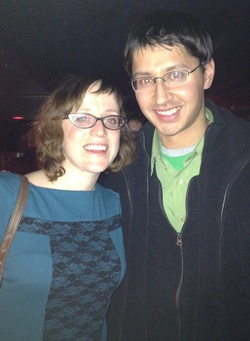 Miss Tess was back in Boston a few days ago! I just found out that Will (guitar), Danny (bass), and Matt (drums) are all NEC graduates--how cool! Below is one of my favoite songs from their album "Darling oh Darling" They say that the most powerful healing can be found wherever people are. I am fortunate to have been surrounded by loving, loyal, and inspirational people this year. Every moment in front of my friends and family will continue to be an opportunity for me to express my highest values: to be kinder than expected and more humble than anticipated.
Our words are our thoughts verbalized, and our deeds are our beliefs actualized. How we treat someone defines how we treat everyone, including ourselves. -Robin Sharma Clearly plenty for me to work on for 2012. Cheers and Happy New Year! 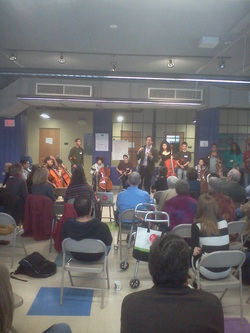 The Music and Civil Society Conference, hosted by Brown University and Community Music Works, was a two day event filled with insightful people and ideas. The workshop concluded when the students at CMW and Play-On Philly joined forces to perform for the attendees. 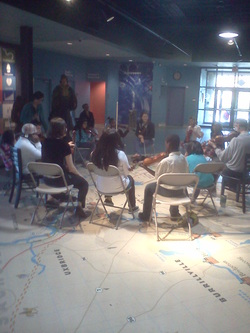 The Rhode Island Fiddle Project, an initiative headed by Rachel Panitch (NEC and CMW), rehearses before its performance at the Community Dance in Pawtucket.  After 6 hours at Uno's, the staff gave the fellows a little Pre-Thanksgiving love I flew into San Antonio early Thursday and was greeted by Ben Cadwallader, director of operations for YOSA (Youth Orchestras of San Antonio). Ben continued to expose me to more wonderful food in Texas--the only exception was the time where we both needed to flush out the Mexican food in our bodies--so we ordered something more simple: Subway. 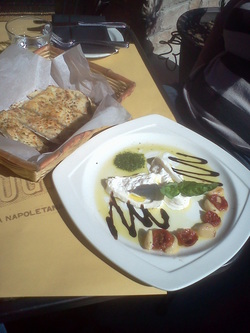 I spent time with Maggie Raveneau (lead instructor of the Sistema program in San Antonio) over lunch. We ate at an authentic Italian pizza joint, complete with a 1000 degree oven that apparently cooks the pizzas in 90 seconds. This appetizer was really good as well... I met the rest of the staff and kids of the Music Learning Center in the afternoon. One of the remarkable things I observed on Thursday was a silent theory class, which was a by-product of not having enough rehearsal space. The engagement level and behavior of the kids was terrific, and the teachers overcame their logistical obstacles to still provide two (one silent) great lessons in the same room. 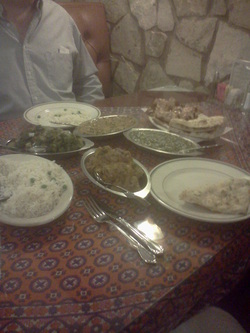 Dinner that night was with Lee Hipp, my former tuba teacher, who ordered a little too much Indian food for the two of us… 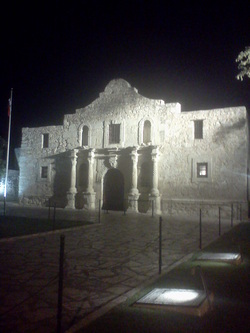 I attended the San Antonio Symphony concert that night featuring a new transcription of the Brahms Four Serious Songs—a cool twist of Romantic and Twentieth Centry writing and orchestration. Following that, Lee gave me a tour of downtown, and I found myself face to face with this historic landmark:  On Sunday, I had booked a convertible to drive over to Houston to see some friends and attend another concert. However, after searching the lot for 15 minutes, the representative from Enterprise failed to find the convertible that I had booked weeks ago. Luckily, he was generous enough to offer this to me to make up for my inconvenience: 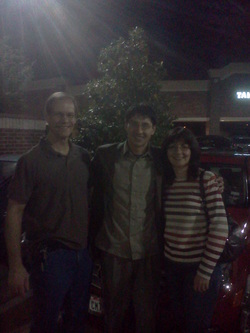 In Houston, I had yet some more Tex-Mex, and spent an awesome evening with the Farquhars. We agreed to take a photo after dinner with my car in the background. 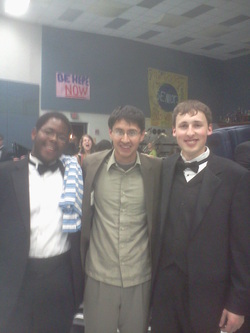 After dinner, I went to the Baylor University Wind Ensemble concert led by Dr. Eric Wilson. The program and performance was spectacular in every way. Aside from works by Grantham, Bernstein, Grainger, and Stephenson (a new brass quintet concerto), the highlight of the night was Maslanka’s Fourth Symphony—encompassing one of the largest palettes of orchestration ever used. The audience went bonkers, confirming my theory about the attractiveness of the wind ensemble repertoire being written in the past 15 years. I should also mention that the bass trombone section was ridiculously loud. This makes sense, because no other than Erik Shinn was their fearless leader! Erik, Corey, and I had a few moments to catch up after the concert. After two amazing weeks in Austin, Dallas, Fort Worth, San Antonio, and Houston, it was finally time to go home. Texas food and hospitality were second to none, and I am eager to plan a return trip in the near future.
After saying goodbye to Austin, I took the 30 minute hopper over to Dallas. I spent the weekend with the Asava family and what resulted were trips down memory lane, meeting new friends, cooking breakfast twice, and late night chocolate feasts. It is hard to replace people in your life that you have known since childhood, and the feeling of being at home for a few days was certainly replenishing. 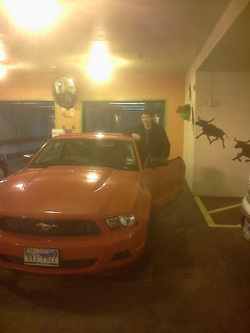 On Monday, I rented a car for the first time, and this is what I got...  Let’s just say I had a little too much fun with it one night, and spun it out on the road. I need to work on driving real-wheel drive automobiles. That didn’t stop me from still pushing the limits the next day. I’m not sure if you can read the green speedometer, but it says 103MPH. Taking a picture probably wasn’t too smart during that time. 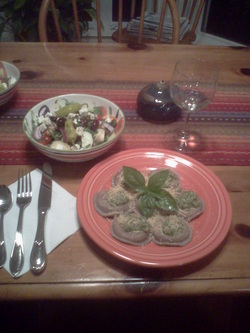 I spent the other half of my time in Dallas with Kim Campbell, his wife LeAnn Binford, and the rest of the Dallas Wind Symphony. Kim founded the group in the 80’s and hosted me for a spectacular dinner at his place on Monday night. The food was…delicious. Passionate conversation about bringing El Sistema to Dallas bled to the following morning where I met with Big Thought—an incredible arts organization that provides numerous interventions in the Dallas area. The time with Kim and LeAnn culminated in their invitation to the Dallas Wind Symphony concert on Tuesday night. The best part about the concert was being joined by 8 of my local friends who had never seen a classical music performance before. The performance included Jennifer Higdon’s Oboe Concerto, and a brand new transcription of the finale from Copland’s Third Symphony. I was grateful to be introduced to the players, crowd, and board at the concert, and to share my passion for wind band with my friends in Dallas. Also starting on Monday, I spent the afternoons in Fort Worth, where I was hosted so kindly by Jill Goff. Her family’s foundation started B-sharp Music in Fort Worth last year, an El Sistema-inspired program that is held at Como Elementary School. On Tuesday, I was invited to spend some time with the students and staff at B-Sharp, where I was treated to student-led performances, bucket-drumming demonstrations, and singing Coldplay. The music making was not only relevant to this community’s culture, but provided the students with three hours of artistic and academic instruction in a safe, compelling, and passionate environment. I was able to spend some time with Amanda and her amazing staff, who allowed me to get my hands dirty immediately.
Jill also introduced me to Performing Arts Fort Worth, Inc, an organization who has reached out to bring arts to over a million kids just this year. Their local political impact has enabled kids to view programming at bass concert hall (with this angel statue on the outside) at least twice a year, and also has made a music curriculum mandatory in the Fort Worth School District. After a great final dinner of Chile Relano, it was time to get to bed, return the Mustang, and head over to the airport early the next morning. Many thanks to all of my hosts! For our U.S. Internships, the fellows were dispatched all over the world: Scotland, Costa Rica, Juneau, Baltimore, Atlanta, Washington D.C., Chicago, Cincinnati, New York, and New Orleans. I decided to split my time between Boston and Texas. (More on the Boston portion of the trip later… ) On Halloween Monday, I landed in Austin. My flight was a little nerve-racking trying to take my euphonium on regional jets, but Delta came through and offered me a free seat for my horn on both legs of the trips. Big kudos there! I was immediately greeted in Austin by former fellow Patrick Slevin, program director of Austin Soundwaves. From that point on, it was Southern hospitality all the way. Patrick hosted me all week at his crib, and showed me around one of America’s coolest cities. We ate, talked, ate, talked, ate, talked, ate more, talked in Spanish, and oh ya, taught too. Speaking of teaching, Austin Soundwaves is the newest El-Sistema program, just three weeks young. I was thrown right in into teaching the percussion students just hours after my arrival. The program is partnered with four terrific organizations: The Hispanic Alliance, Southwest Key, East Austin College-Prep, and The University of Texas. The program began with 40 players, all string players and percussionists, grades 6-8. I arrived just in time to see the end of the paper-instrument process. Within four days of spending time with Patrick and his incredible teaching artists, the transformation and progress of the kids was remarkable. The discipline of orchestra rehearsal was demonstrated, the values of community reiterated, and the music making initiated. By Thursday (the 4th day of the trip), the kids were singing Bombay-La, and conveying respect for one another. They are slated to receive real instruments early next week, and have shown the promise to do spectacular things with them. All in all, pictures and videos say it much better than words.  I also had a meeting with Doug Dempster—dean of fine arts at UT, lunch with Jerry Junkin—director of bands at UT, and dinner with Egda Ruelas—executive director of the Hispanic Alliance. All inspiring people with a deep perspective about the arts. Corey Durham came up to see me from Waco, and I dragged him to a vegetarian restaurant called Bouldin Creek Café—best decision ever made. Totally friendly, totally progressive, and totally delicious! A sample of their values… 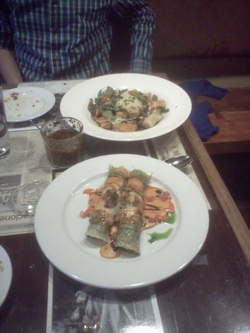 Patrick took me to his late-night Spanish study session, where I attempted to understand what was going on over the wine and guacamole that was served. He tried to introduce me to juggling and tennis ball back-therapy, both of which will have to be continued on my next trip. Lastly, we indulged in colorful Argentinean cuisine, enormous donuts from a food truck, and a local American dinner overlooking the horizon. Southern Hospitality or former fellow hospitality—either way, it was a great week. 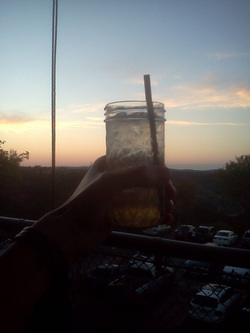 Cheers, here's to Austin! |
Purpose
From 2013 on, this blog will serve as a photo-blog encompassing students, friends, family, and other fun life events! Archives
January 2016
|
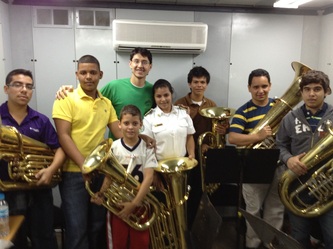
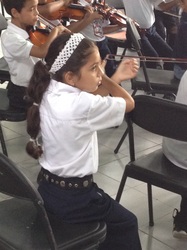
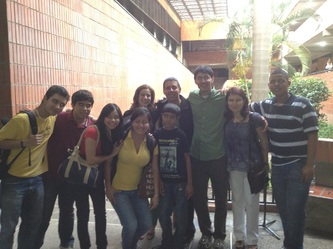
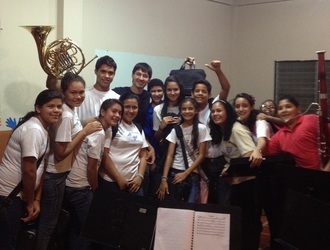
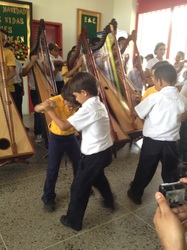
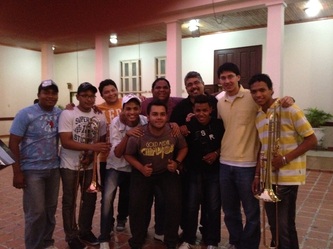
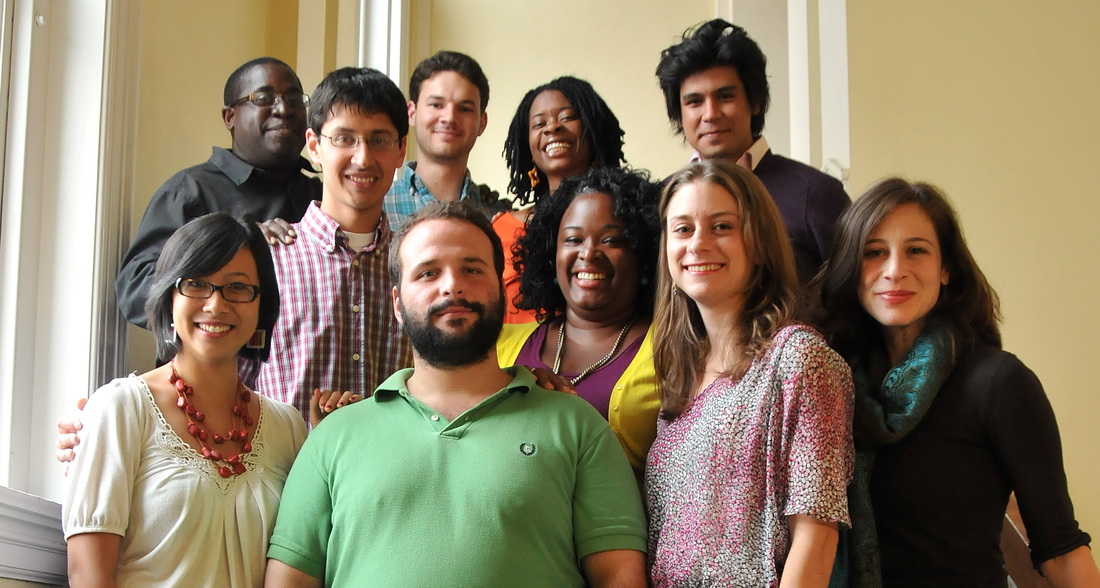
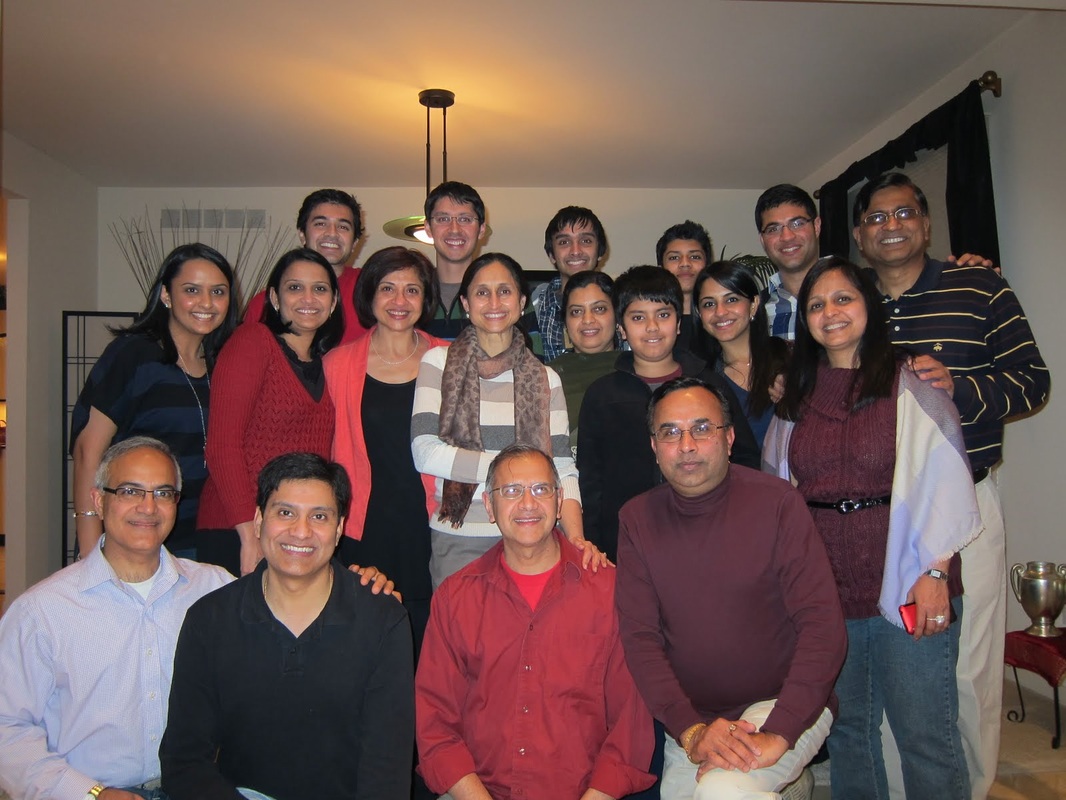


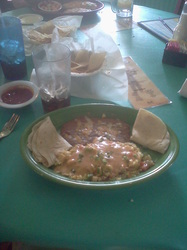

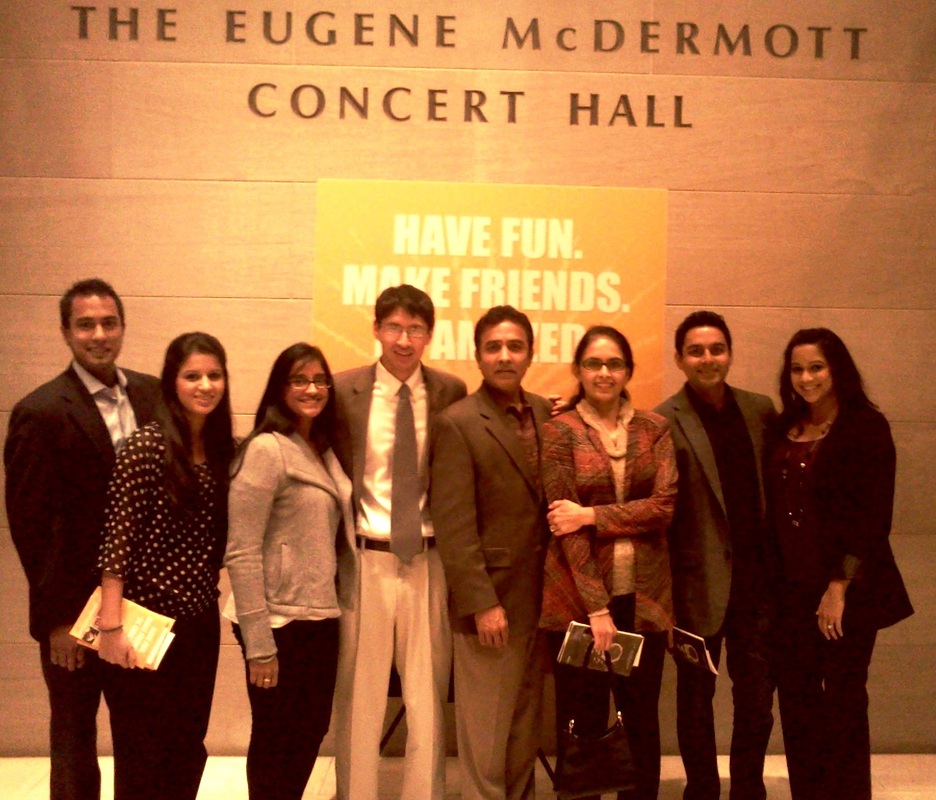
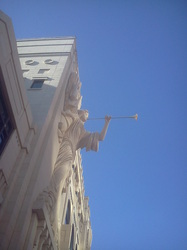
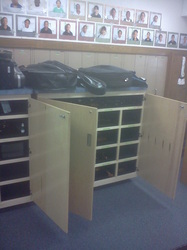
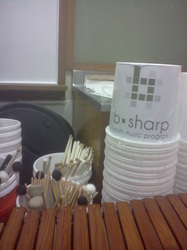
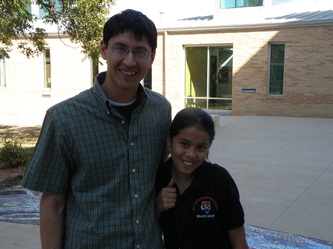
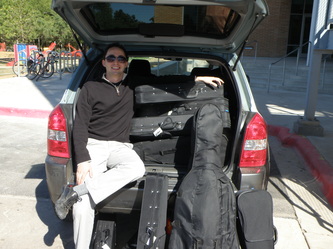
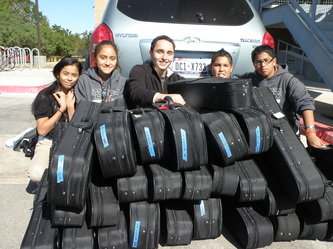
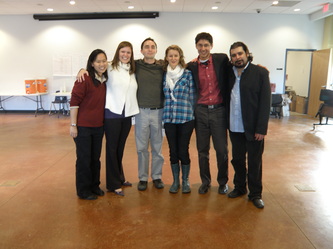
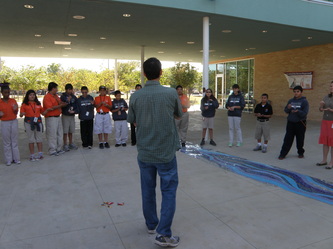
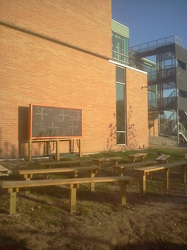

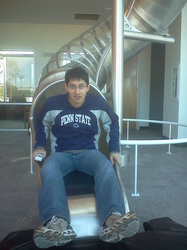
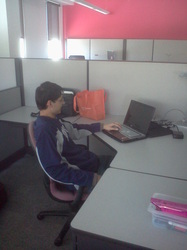
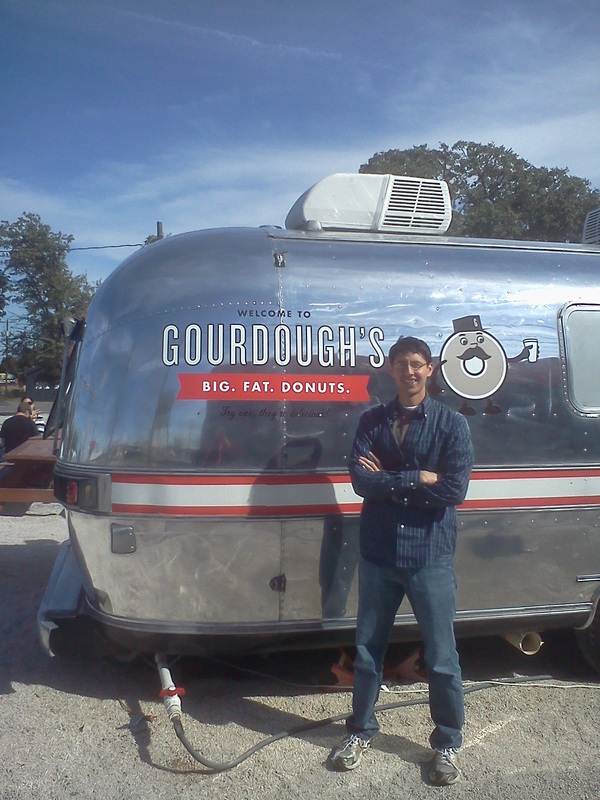

 RSS Feed
RSS Feed
